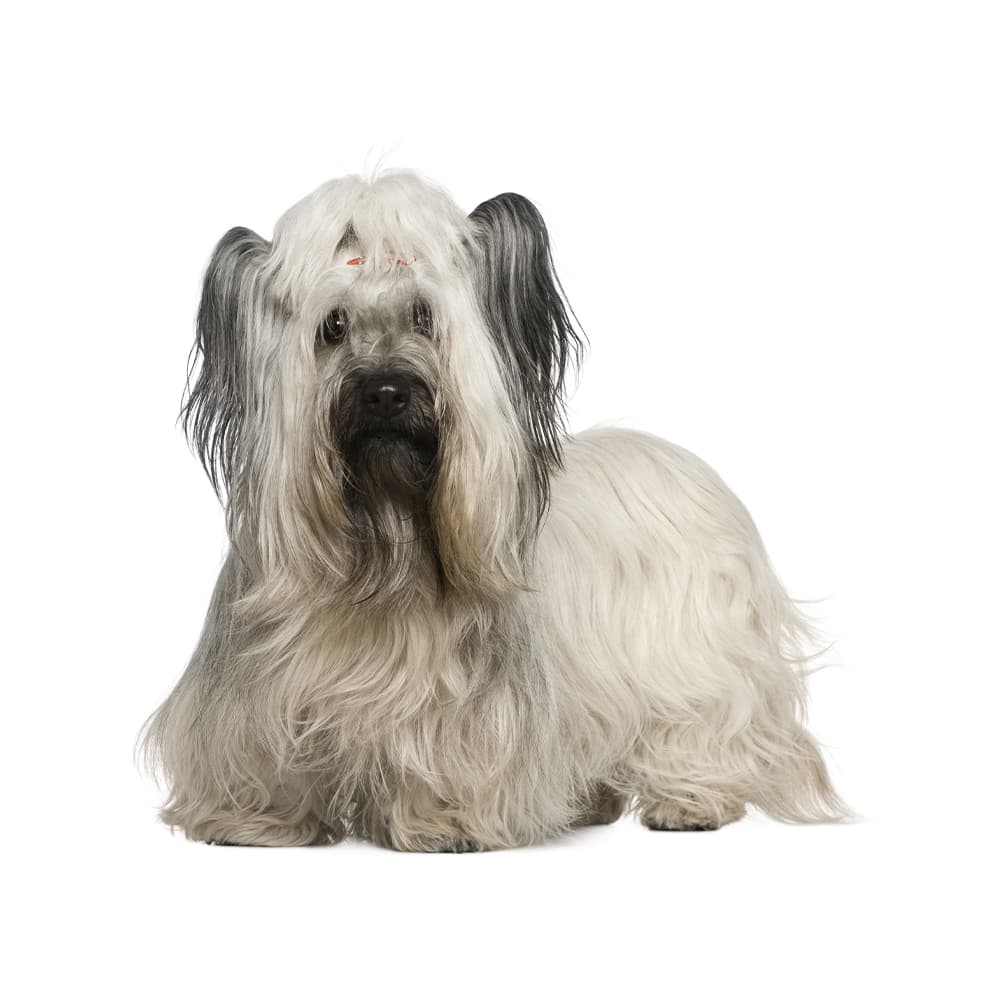Discover your dog's connection to this breed and 200+ others


Discover your dog's connection to this breed and 200+ others



The Skye Terrier is one of the oldest terrier breeds, originating from the Isle of Skye in Scotland, hence the name. This breed was initially bred to hunt and kill badger, fox, and otter, sometimes even in their burrows. Skye Terriers have a history dating back to at least the 16th century. Their long, distinctive coat was a functional characteristic to protect them from harsh weather and any attacks by their prey. This breed gained popularity in the 19th century, with Queen Victoria being a known enthusiast.
Skye Terriers are known to be generally healthy dogs. Some may be susceptible to orthopedic problems, specifically a condition called Skye limp or puppy limp, which is a form of premature closure of the distal radial growth plate. As for all breeds, genetic testing is recommended including for the following specific conditions: hyperuricosoria, degenerative myelopathy, and progressive rod-cone degeneration.
Skye Terriers are known for their courageous and good-tempered nature. They are typically friendly, loyal, and can be quite affectionate with their families. However, like many terrier breeds, they can also be somewhat independent and stubborn. They are generally reserved around strangers and may not be suitable for homes with small children due to their low tolerance for rough handling. Skye Terriers get along well with other dogs if socialized from a young age, but their strong hunting instincts mean they might not do well with smaller pets.
A canine genetic lineage is a group of individuals or entire breeds that descended from common ancestors predating modern breed formation. Often these lineages are associated with a ‘type’ of dog with a unique historical working role and associated behaviors (e.g., herding, scent hunting, etc.).
Terriers were bred to hunt pests like rats, foxes, and badgers. Terriers are tenacious and fearless with high energy levels, strong prey drive, and feisty temperaments which all help in their hunting abilities. Terriers were used as mighty hunters in both urban and rural settings. Terriers have natural hunting instincts and protective tendencies.
Example breeds with ancestry from this lineage include Jack Russell Terrier, Scottish Terrier, and Yorkshire Terrier.
Greyfriars Bobby was a famous Skye Terrier who reportedly stayed by his owner's grave for 14 years until his own death in 1872. A statue and a pub in Edinburgh commemorate his loyalty.
The Skye Terrier's ears can be prick (upright) or drop (folded), and both types can appear in the same litter. The American Kennel Club (AKC) standard accepts both.
The Skye Terrier is one of the least known and rarest dog breeds, even in the UK. Their numbers have been so low that the breed has been on the Kennel Club's Vulnerable Native Breeds list for years.
With Queen Victoria of England championing the Skye Terrier in the late 19th century, it was said by historians that “a duchess would almost be ashamed to be seen in the park unaccompanied by her long-coated Skye.”
https://vgl.ucdavis.edu/breed/skye-terrier
https://www.hillspet.com/dog-care/dog-breeds/skye-terrier
https://www.akc.org/dog-breeds/skye-terrier/
https://www.ukcdogs.com/skye-terrier
https://www.fci.be/en/nomenclature/SKYE-TERRIER-75.html
Recommended by top vets with decades of experience
21 breeds
64 genetic health markers
50 genetic trait markers
